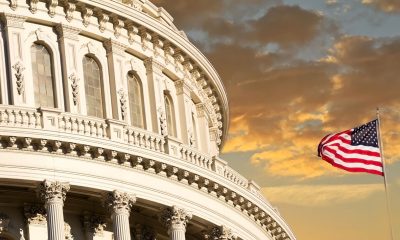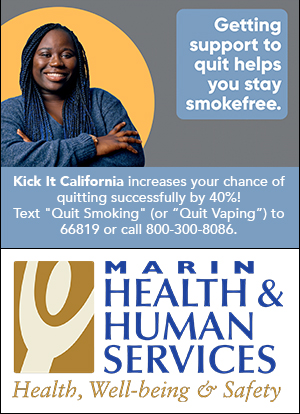California Black Media
Weather Experts: Heat Waves Can Cause Wildfires, Health Problems and Death
It was more than a simple walk in the park for exercisers pacing and jogging around Warner Center Park in the Woodland Hills neighborhood of Los Angeles around midday on July 4. The weather was “sweltering,” according to one of the parkgoers, an African American man in his 40s who asked to remain anonymous. “Working out around this time is a way hotter experience than a few weeks ago,” the man continued. According to weather experts, Californians should not expect a break in the extreme heat any time soon.

By McKenzie Jackson, California Black Media
It was more than a simple walk in the park for exercisers pacing and jogging around Warner Center Park in the Woodland Hills neighborhood of Los Angeles around midday on July 4.
The weather was “sweltering,” according to one of the parkgoers, an African American man in his 40s who asked to remain anonymous.
“Working out around this time is a way hotter experience than a few weeks ago,” the man continued.
According to weather experts, Californians should not expect a break in the extreme heat any time soon.
National Oceanic and Atmospheric Administration meteorologist David Lawrence said most of the Golden State is experiencing a heat wave.
“We will see daytime high temperatures for many interior areas reaching to 100 to 115 degrees each afternoon. Overnight low temperatures won’t provide much relief — only dipping into the 70s and holding into the lower 80s for some locations,” he explained.
Lawrence was speaking during a July 2 news briefing focused on the current weather conditions, their dangers, and what Californians need to know to stay safe in the blistering weather this summer.
The briefing was organized by Listos California, the state’s disaster readiness program, and hosted by Ethnic Media Services and California Black Media.
California Black Media Executive Director Regina Wilson said heat waves can create dangerous fire conditions and catapult temperatures in inland areas of the state into the triple digits.
“As we move into the summer season, hotter and drier conditions mean California will likely face higher risk of wildfires — wildfire smoke, heat, power outages and dangerous water conditions,” she said.
Listos California, the state office in charge of emergency preparedness, has partnered with community groups and offers a resource hub built around an educational campaign to help Californians get ready for disasters related to extreme heat.
Dr. Rita Nguyen, assistant health officer for California and director of population health at the California Department of Public Health, said people underestimate how dangerous heat waves can be.
“Heat waves kills more people directly than any other weather-related hazard,” she said.
She said the people at most risk of experiencing heat-caused health issues include children and infants, senior citizens, pregnant people, people working outdoors or indoors without air conditioning, disabled individuals, unhoused persons, and lower-income people.
The warning signs of heat illness include confusion, vomiting, passing out, heavy sweating, muscle cramps, weakness, headache, nausea, vomiting, paleness, tiredness, irritability, and dizziness.
Staying hydrated, cool, and informed about the weather forecasts are ways to prevent heat health problems. Nguyen recommended to not drink sugary, caffeinated, or alcoholic drinks, which can dehydrate a person.
California Division of Occupational Safety and Health Program Senior Safety Engineer Charlene Gloriani said, under state law, businesses with employees who work outdoors — such as agricultural workers — are required to give plenty of access to free and clean water and shade to prevent heat-related illnesses.
“Shaded areas must not cause exposure to another health or safety hazard,” she explained. “When temperatures exceed 95 degrees a buddy system should be in place and employees must be monitored for signs of heat illness.”
To get more information on extreme heat and to access resources to help you stay healthy and cool.
Activism
Oakland Post: Week of December 31, 2025 – January 6, 2026
The printed Weekly Edition of the Oakland Post: Week of – December 31, 2025 – January 6, 2026
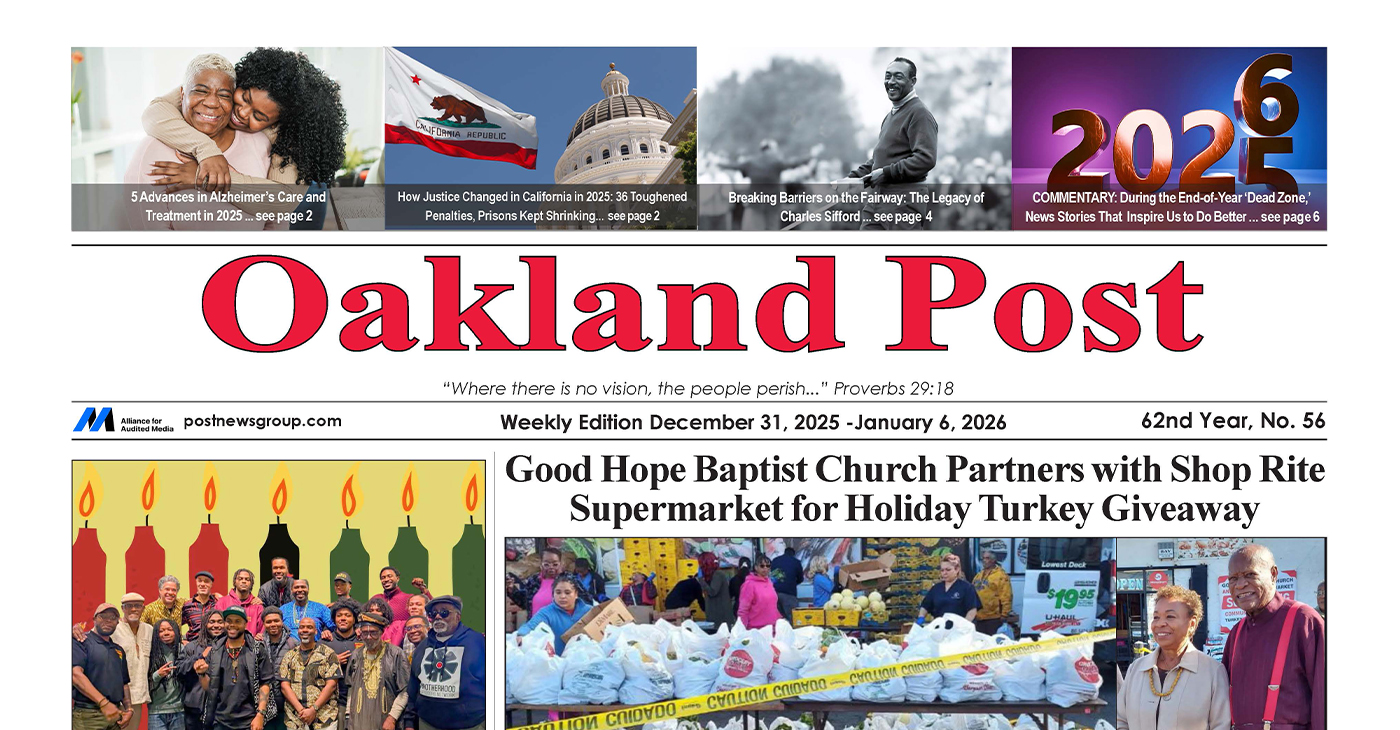
To enlarge your view of this issue, use the slider, magnifying glass icon or full page icon in the lower right corner of the browser window.
Activism
2025 in Review: Seven Questions for Assemblymember Lori Wilson — Advocate for Equity, the Environment, and More
Her rise has also included several historic firsts: she is the only Black woman ever appointed to lead the influential Assembly Transportation Committee, and the first freshman legislator elected Chair of the California Legislative Black Caucus. She has also been a vocal advocate for vulnerable communities, becoming the first California legislator to publicly discuss being the parent of a transgender child — an act of visibility that has helped advanced representation at a time when political tensions related to social issues and culture have intensified.
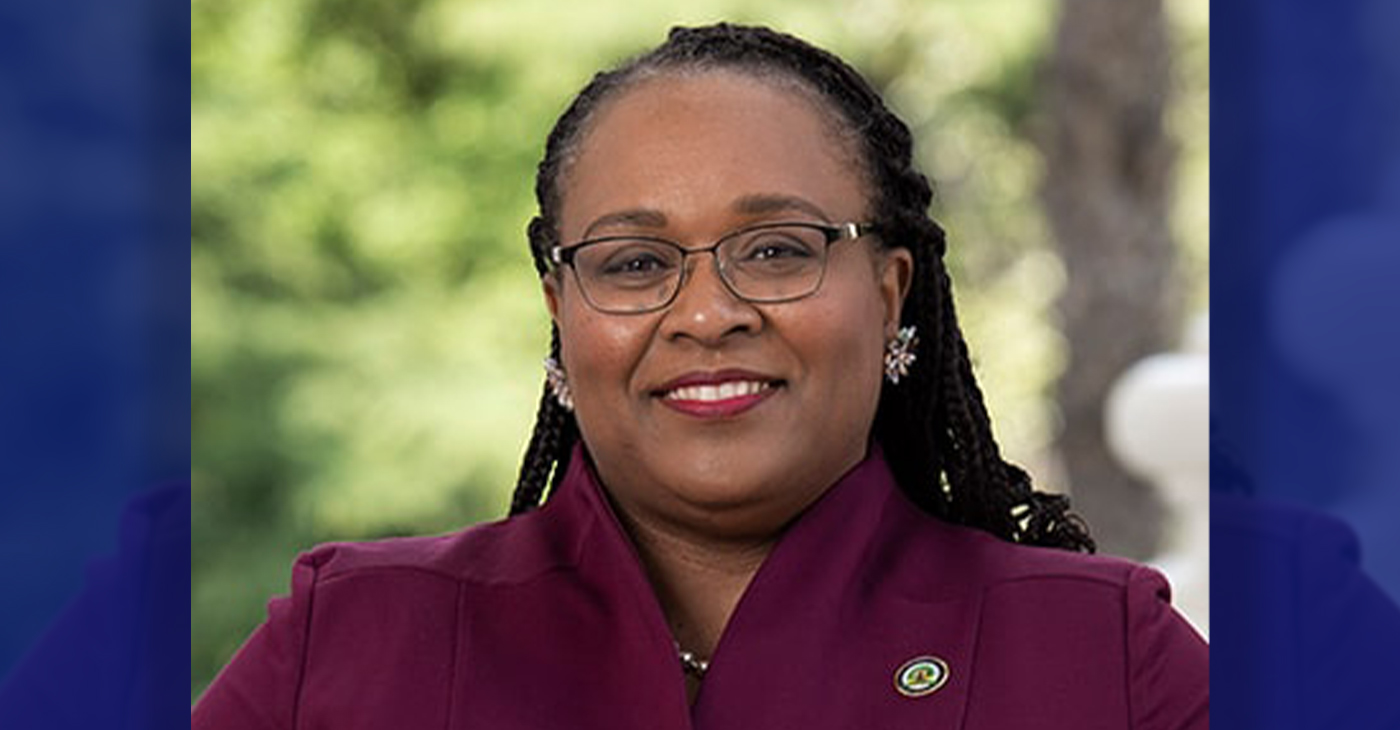
By Edward Henderson, California Black Media
Assemblymember Lori D. Wilson (D-Suisun City) joined the California Legislature in 2022 after making history as Solano County’s first Black female mayor, bringing with her a track record of fiscal discipline, community investment, and inclusive leadership.
She represents the state’s 11th Assembly District, which spans Solano County and portions of Contra Costa and Sacramento Counties.
Her rise has also included several historic firsts: she is the only Black woman ever appointed to lead the influential Assembly Transportation Committee, and the first freshman legislator elected Chair of the California Legislative Black Caucus. She has also been a vocal advocate for vulnerable communities, becoming the first California legislator to publicly discuss being the parent of a transgender child — an act of visibility that has helped advanced representation at a time when political tensions related to social issues and culture have intensified.
California Black Media spoke with Wilson about her successes and disappointments this year and her outlook for 2026.
What stands out as your most important achievement this year?
Getting SB 237 passed in the Assembly. I had the opportunity to co-lead a diverse workgroup of colleagues, spanning a wide range of ideological perspectives on environmental issues.
How did your leadership contribute to improving the lives of Black Californians this year?
The Black Caucus concentrated on the Road to Repair package and prioritized passing a crucial bill that remained incomplete during my time as chair, which establishes a process for identifying descendants of enslaved people for benefit eligibility.
What frustrated you the most this year?
The lack of progress made on getting Prop 4 funds allocated to socially disadvantaged farmers. This delay has real consequences. These farmers have been waiting for essential support that was promised. Watching the process stall, despite the clear need and clear intent of the voters, has been deeply frustrating and reinforces how much work remains to make our systems more responsive and equitable.
What inspired you the most this year?
The resilience of Californians persists despite the unprecedented attacks from the federal government. Watching people stay engaged, hopeful, and determined reminded me why this work matters and why we must continue to protect the rights of every community in our state.
What is one lesson you learned this year that will inform your decision-making next year?
As a legislator, I have the authority to demand answers to my questions — and accept nothing less. That clarity has strengthened my approach to oversight and accountability.
In one word, what is the biggest challenge Black Californians are facing currently?
Affordability and access to quality educational opportunities.
What is the goal you want to achieve most in 2026?
Advance my legislative agenda despite a complex budget environment. The needs across our communities are real, and even in a tight fiscal year, I’m committed to moving forward policies that strengthen safety, expand opportunity, and improve quality of life for the people I represent.
Activism
2025 in Review: Seven Questions for Assemblymember Tina McKinnor, Champion of Reparations, Housing and Workers’ Rights
In 2025, McKinnor pushed forward legislation on renters’ protections, re-entry programs, reparations legislation, and efforts to support Inglewood Unified School District. She spoke with California Black Media about the past year and her work. Here are her responses.
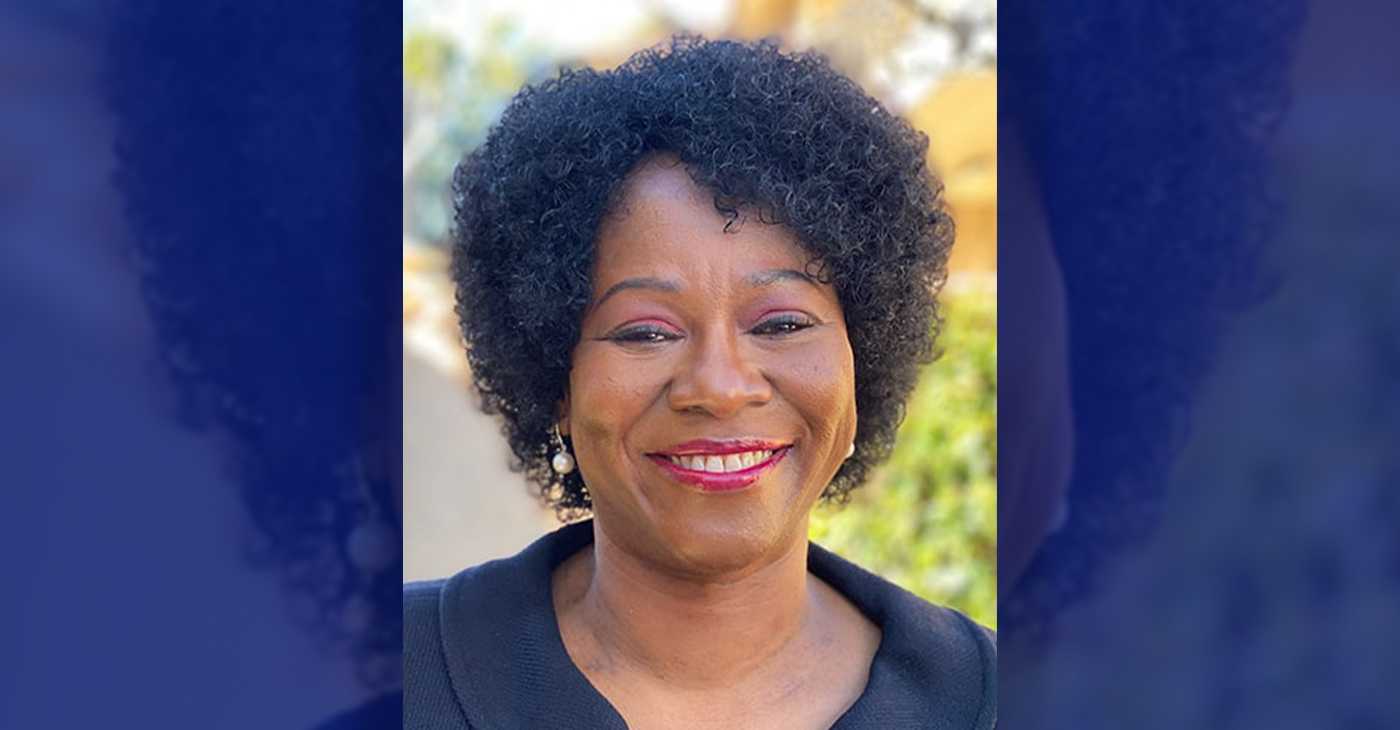
By Joe W. Bowers Jr., California Black Media
Assemblymember Tina McKinnor (D-Inglewood) represents
California’s 61st Assembly District.
As a member of the California Legislative Black Caucus (CLBC),
McKinnor was elected in 2022. She chairs the Los Angeles County Legislative Delegation and leads the Assembly Public Employment and Retirement Committee. McKinnor also served as a civic engagement director, managed political campaigns, and worked as chief of staff for former Assemblymembers Steven Bradford and Autumn Burke.
In 2025, McKinnor pushed forward legislation on renters’ protections, re-entry programs, reparations legislation, and efforts to support Inglewood Unified School District. She spoke with California Black Media about the past year and her work. Here are her responses.
Looking back on 2025, what do you see as your biggest win?
Assembly Bill (AB) 628. If rent is $3,000, people should at least have a stove and a refrigerator. It’s ridiculous that people were renting without basic appliances.
I’m also proud that I was able to secure $8.4 million in the state budget for people coming home from incarceration. That includes the Homecoming Project, the menopause program for incarcerated women, and the Justice Leaders Program.
How did your leadership help make life better for Black Californians this year?
After the Eaton Fire, I pushed to get the same kind of support for affected areas that wealthier regions get after disasters.
I also did a lot of work building political power— establishing the Black Legacy PAC and California for All of Us PAC so we could support Black candidates and educate voters. We also called voters to make sure they understood Prop 50.
People need to understand this: there are only 12 Black legislators in the Capitol. Folks act like we can just walk in and pass reparations, but that’s not how it works.
What frustrated you most this year?
The governor did not have the political will to sign these bills: AB 57 and AB 62. They both passed overwhelmingly in the Assembly and the Senate. We did the work. The only person who didn’t have the political will to sign them was the governor.
The public needs to ask the governor why he didn’t sign the bills. We can’t keep letting people off the hook. He has to answer.
I also introduced AB 51 — the bill to eliminate interest payments on Inglewood Unified School District’s long-standing state loan — held in the Appropriations Committee. That was frustrating,
What inspired you most in 2025?
The civil rights trip to Alabama was life changing. We visited the Legacy Museum and the National Memorial for Peace and Justice. We took members of the Black, Latino, Jewish, and API caucuses with us. It changed all of us.
People aren’t always against us — they just don’t know our history.
What’s one lesson from 2025 that will shape how you approach decisions next year?
The legislative trip to Norway taught me that collaboration matters. Government, labor, and industry sit down together there. They don’t make villains. Everybody doesn’t get everything they want, but they solve problems.
What’s the biggest challenge facing Black Californians in one word?
Inequity. It shows up in housing, wealth, stress – all these things.
What’s the number one goal you want to accomplish in 2026?
Bringing back AB 57 and AB 62, and securing money for the Inglewood Unified loan interest forgiveness.
-

 Activism4 weeks ago
Activism4 weeks agoDesmond Gumbs — Visionary Founder, Mentor, and Builder of Opportunity
-

 Activism4 weeks ago
Activism4 weeks agoFamilies Across the U.S. Are Facing an ‘Affordability Crisis,’ Says United Way Bay Area
-

 Alameda County4 weeks ago
Alameda County4 weeks agoOakland Council Expands Citywide Security Cameras Despite Major Opposition
-

 Alameda County4 weeks ago
Alameda County4 weeks agoBling It On: Holiday Lights Brighten Dark Nights All Around the Bay
-

 Activism4 weeks ago
Activism4 weeks agoBlack Arts Movement Business District Named New Cultural District in California
-

 Activism4 weeks ago
Activism4 weeks agoLu Lu’s House is Not Just Toying Around with the Community
-

 Activism4 weeks ago
Activism4 weeks agoOakland Post: Week of December 17 – 23, 2025
-

 Black History3 weeks ago
Black History3 weeks agoAlfred Cralle: Inventor of the Ice Cream Scoop












